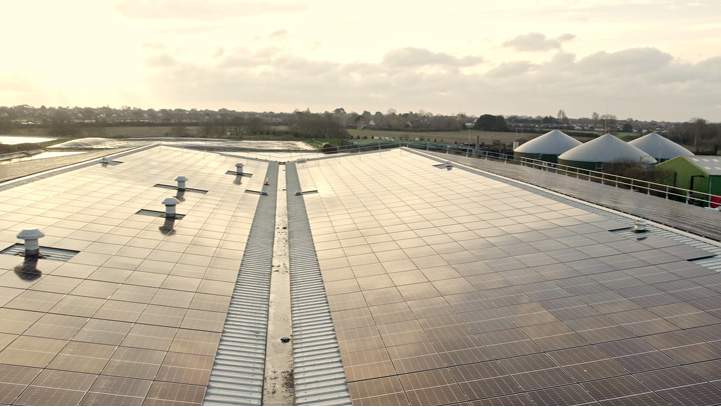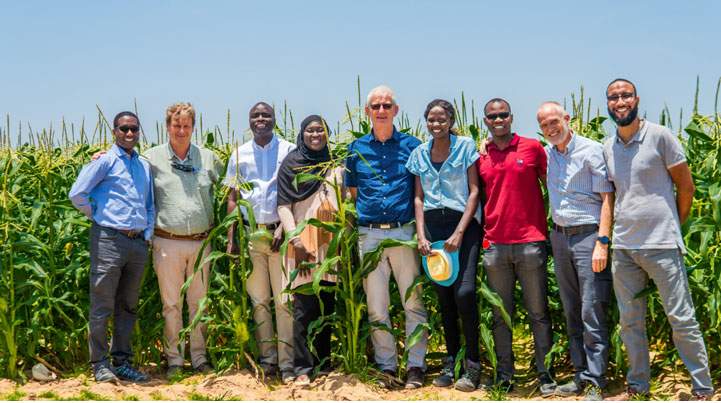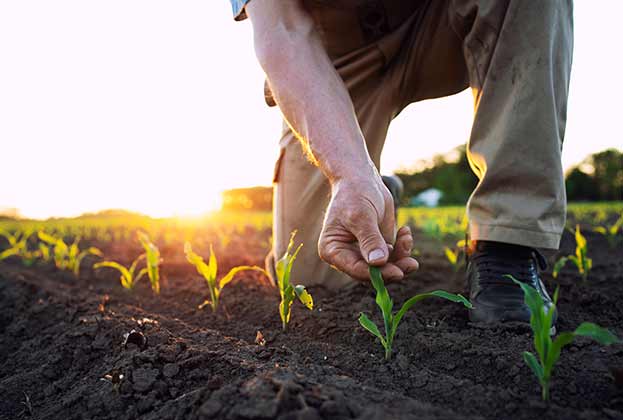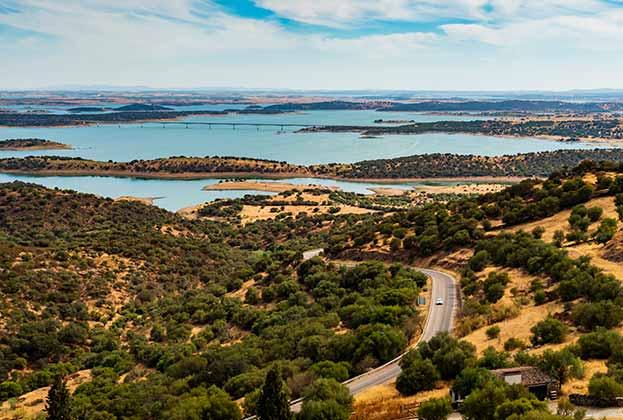Developing world-leading growers and pioneering new crops and systems
Following the sun
Five generations of the Barfoot family have farmed the unique soils and microclimate of the Hampshire basin in the south of England. During the 1970s, Peter Barfoot and his father grew and marketed a single crop of vegetables directly to retailers. Fast-forward nearly 50 years and Barfoots operates out of four key global hubs; working across thousands of acres, employing thousands of people and supplying 135,000 tonnes of fresh produce to the UK market annually.
Barfoots UK
In 1994, the business purchased Sefter Farm in West Sussex. This has since become the Barfoots main site for producing, processing and supplying pre-packed sweetcorn to the major supermarkets. As retailers began demanding a year-round supply of fresh produce, the business looked overseas to warmer climates.
Local knowledge, insight and advice has been invaluable when setting up the overseas hubs and has reduced some of the complexities of running a global business
Kim Barfoot-Brace, Barfoots Brand and Marketing Manager
Barfoots España
Over time, the business built connections with Spanish growers which led to sweetcorn being imported to the UK market outside of the traditional British growing season. The success in Spain prompted the launch of Barfoots España in 2002. Today, 6,500 acres of productive Spanish farmland grows many semi-exotic vegetables for British consumers. Barfoots España is managed by Peter’s eldest daughter, Jo-Anne, who continues to work with many of the original growers. As well as farms, Barfoots España incorporates packing facilities, a supply chain, and a logistics management hub.
Barfoots Latin America
Barfoots has been working with the finest growers in Latin America since 2003, when they first started importing asparagus from Peru. In 2006, following an extensive career working for Barfoots in the UK, a senior employee originating from Argentina returned to his home country and later launched Barfoots Latin America. Barfoots have gone on to develop growing partnerships in Argentina and Brazil, providing a number of crops to ensure its year-round supply schedule.
Barfoots Senegal
In 2006, Barfoots embarked on a joint venture with the French Société de Cultures Légumiéres to purchase farmland in Senegal. Barfoots Senegal is a major grower of vegetables such as sweetcorn, baby corn, chillies and butternut squash. It has become one of the most important supply hubs for Barfoots, with its large-scale growing, packing and exporting capabilities due to the superb location on the Atlantic coast enabling efficient export of produce by boat.
Sustainability at Barfoots
Barfoots strives to be as sustainable and ethical as possible, particularly in the long-term approach to its relationships with growers, employees, and the farmed land. In selecting its overseas hubs, the businesses’ primary driver is finding locations that provide the best conditions for the produce to grow, but also where it can be easily transported by road and sea. This reduces transport carbon emissions without compromising quality.
The business aims to improve woody biomass, soil health, biodiversity and input efficiency of the farmland managed by Barfoots and its growers. This supports its greenhouse gas roadmap, which aims to maximise on-farm carbon sinks and minimise emissions.
In 2010, an anaerobic digestor plant was installed at Sefter Farm to utilise green factory waste. This produces all the energy the site requires, plus a surplus, which is exported to the grid. This also reduces waste leaving Sefter Farm, produces organic fertiliser for Barfoots farms and reduces the number of vehicle movements associated with transporting waste off-site. In 2022, a wastewater treatment plant was also installed at the Farm to convert factory wastewater into irrigation water for crops. Solar photovoltaic panels have been introduced at Sefter Farm and the adjacent Leythorne packaging facility this year to ensure continued energy self-sufficiency as the business grows.
Such is the integration of sustainability throughout Barfoot’s operating model, and the milestones achieved, that Peter Barfoot was awarded a CBE for Services to Sustainable Farming in 2020.
Barfoots global supply chain
The business has scrutinised everything from the growing, processing, packaging, and transportation of the produce. This enables the business to supply fresh produce to the UK market all year round in the most cost-effective and environmentally sensitive way. Figure 3 illustrates Barfoots global supply chain.
Investing in the global hubs has enabled the business to grow in locations that provide the best environment for its produce outside of the UK season, whether that be on its own land, or forming close collaborations with other growers. Barfoots Brand and Marketing Manager, Kim Barfoot-Brace explains: ‘As UK farmers, we stand by the belief that the right crop should be produced in the best location at the best time. Outside of the UK season, we follow the sun for the best conditions to ensure the highest quality crop, produced as sustainably as possible for the UK market all year round.’
Community projects
Many environmental, economic and social overseas projects have been supported by the business. For example, in Senegal, the business supports community projects, invests in schools and medical facilities, employs doctors and supports projects to improve health education. In South America, the focus has been on restoring biodiversity. In the UK, Barfoots supports charities including food redistribution organisations UKHarvest and FareShare who redistribute surplus produce to those who need it, and Veg Power; a project to inspire children through to teenagers, to enjoy more vegetables.

Solar and green energy generation at Sefter Farm, West Sussex

Wastewater treatment plant at Sefter Farm, West Sussex

Barfoots Senegal team
Read the articles within Spotlight: Global Farmland below.
.jpg)


